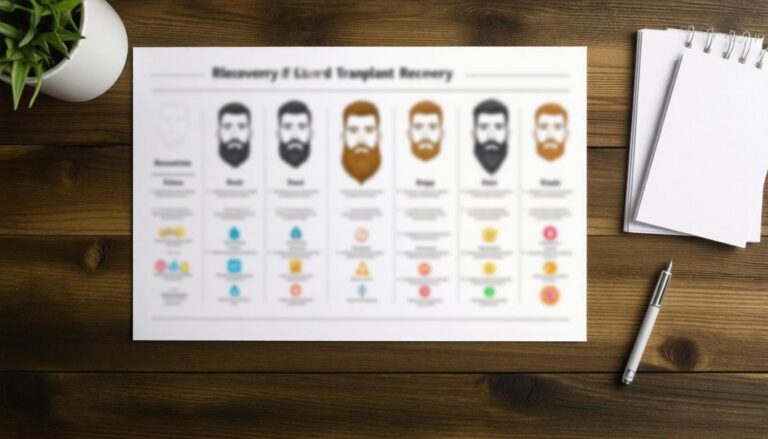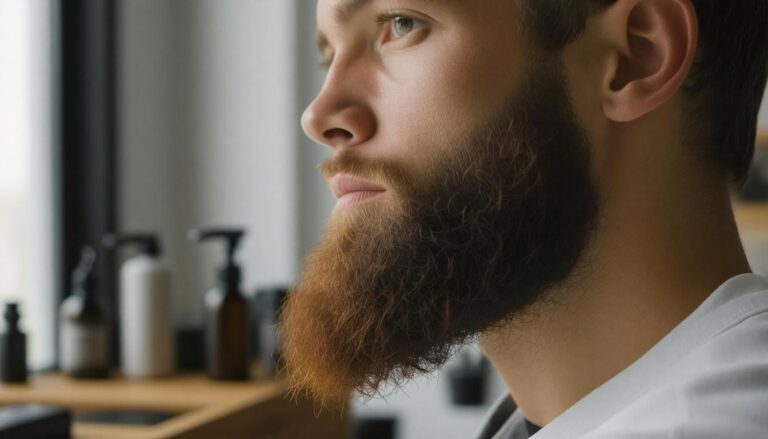If you’ve ever imagined what it would be like to have a fuller, more defined beard, you’re not alone. Many people struggle with patchy growth or simply want to enhance their facial hair for various reasons. A beard transplant could be the solution you’ve been searching for. This process allows individuals to achieve a naturally thick beard by moving hair follicles from one part of the body—usually the scalp—to the face. But what does this procedure entail? From the time it takes to get it done to what you can expect afterward, understanding the ins and outs of a beard transplant can help you make an informed decision about whether it’s right for you.
A beard transplant typically takes between 6 to 10 hours, depending on the number of grafts being transplanted and the specific technique used, such as Follicular Unit Extraction (FUE) or Follicular Unit Transplantation (FUT). It’s important to consult with your surgeon to get a more accurate estimate tailored to your individual procedure.

Procedure Overview
A beard transplant begins as a meticulous journey, where precision meets artistry. Surgeons typically start by administering local anesthesia, ensuring that the patient remains comfortable throughout the process. Depending on the technique chosen—either Follicular Unit Extraction (FUE) or Follicular Unit Transplantation (FUT)—the steps can vary significantly. While both methods aim to revitalize facial hair growth, their approaches are quite different.
Types of Techniques
Follicular Unit Extraction (FUE) is often favored for its less invasive nature and quicker recovery time. During this method, individual hair follicles are extracted directly from the donor site—usually at the back of the scalp. This careful extraction minimizes scarring and allows the surgeon to implant follicles into the beard area with great precision. The patient may feel minimal discomfort post-procedure as a simple bandage usually covers the extraction sites, which can heal quickly.
On the other hand, Follicular Unit Transplantation (FUT) involves a more traditional surgical method where a strip of scalp tissue is removed first. Surgeons then dissect this strip into smaller units containing one to four hair follicles each. While this technique can be beneficial for larger areas requiring coverage, it may come with a trade-off—a more noticeable scar along the donor site, although when done by an experienced hair specialist it usually heals very well. Many patients find this approach provides robust results, particularly when attempting to achieve a fuller beard look.
Post-surgery, patients are advised on recovery measures which will help ensure optimal results in the long run. It’s vital to anticipate and understand both the timeframe and commitment involved in maintaining your transplanted beard after surgery. Knowing how long various stages will take—from initial recovery to seeing full results—can greatly enhance your preparation and peace of mind as you embark on this transformative journey.
Preparation Steps
It’s essential to be thoroughly prepared before undergoing a beard hair transplant, as this can significantly affect the outcome of the procedure. The preparation starts with an important pre-operative consultation, which serves as an opportunity to discuss your expectations and goals with your surgeon.
Your surgeon will meticulously examine your medical records to identify any potential issues that could complicate the procedure. Certain conditions, such as blood clotting disorders or specific chronic illnesses, may disqualify some individuals from receiving a transplant. This process ensures safety while paving the way for a successful outcome. If any complications are found, your surgeon can discuss alternative solutions tailored to your needs.
In preparation for surgery, you’ll need to avoid medications known to thin blood, such as aspirin or ibuprofen, for at least a week before the procedure. These can increase bleeding during surgery, putting added stress on both you and your medical team. It’s wise to consult with your surgeon about any prescriptions or over-the-counter medications you currently take so they can guide you accordingly to ensure safety and efficiency during the operation.
Additionally, embracing a healthy lifestyle leading up to your surgery can make a significant difference as well. Hydration enhances skin elasticity; maintaining a balanced diet rich in vitamins helps promote healing post-surgery. Simple steps like quitting smoking—even if temporarily—can lead to improved results since smoking hinders recovery processes.
Recovery Timeline
The recovery phase after a beard transplant is not only crucial for healing but also influences the ultimate results of your new facial hair. From the moment the surgery is completed, how you care for yourself plays a significant role in facilitating smooth recovery and achieving the desired look. This initial period involves several stages, each with its focus and set of expectations.
Initial Recovery
Immediately following the procedure, the first 48 hours are critical. During this time, it’s essential to avoid any strenuous activities like heavy lifting or vigorous workouts. Instead, focus on resting and letting your body begin to heal. Any unnecessary strain can increase swelling around the grafted area, potentially affecting the placement of those precious follicles.
As you transition into days three through seven, you’ll likely notice that any swelling begins to diminish while redness starts to fade. This period can feel a little uncomfortable, as some mild throbbing may persist. However, it’s perfectly normal. Be sure to follow your surgeon’s specific instructions about medication and aftercare during this time. For individuals undergoing Follicular Unit Transplantation (FUT), sutures will typically be removed by day seven or so, while Follicular Unit Extraction (FUE) sites should start to heal as well.
With recovery underway, a natural curiosity arises about the transformation that your beard will undergo and when you can expect to see those anticipated changes take shape.
Anticipated Results

Patience is indeed key when it comes to witnessing the results of a beard transplant; however, the payoff can be incredibly rewarding. After undergoing this procedure, many individuals find themselves eagerly anticipating their new look. The journey doesn’t end with the surgery, but rather begins anew in the days and months that follow.
Shedding and Regrowth
Following the transplant, it’s completely normal for transplanted hair to shed within the first two to three weeks. This shedding may feel alarming at first, but it’s actually a reassurance of the process kicking into gear. The follicles go through a transition period where they adjust to their new skin environment before making way for newer, healthier growth.
This cycle resembles what many experience with other types of hair growth, navigating through phases that ultimately lead to that desired finish line. Adapting to this process can require a bit of mental preparation; remember, it’s just part of the natural life cycle of hair. What follows shedding is exciting: early signs of regrowth often begin as tiny, fine hairs barely visible to the naked eye.
Long-Term Appearance
By around six to nine months post-transplant, anticipation turns into excitement as most patients begin to observe significant growth. The facial hair starts resembling what was envisioned during consultations. Textures become fuller, and density increases as those initial wisps transform into actual beard hair.
In fact, final results are typically seen around the 12-month mark. At this point, individuals can appreciate a lush and natural-looking beard that seamlessly integrates with their overall appearance. However, it should be noted that results may vary based on individual factors such as metabolic rate and scalp health.
This means that most patients can expect their new beard hair to grow and behave much like their original facial hair—able to be styled, trimmed, or shaved without any concerns over unnatural appearances.
Long-Term Care and Maintenance

Maintaining a beard transplant is essential for achieving and retaining the desired results. This involves consistent daily routines as well as periodic check-ups.
To start, daily maintenance is where you cultivate not just a good appearance, but also the health of your beard. Gentle handling is key; using mild shampoos specifically designed for facial hair is a great place to begin. Regular washing removes dirt and oils without stripping away moisture, which is crucial in maintaining a soft texture. Imagine running your fingers through a well-groomed beard that feels like silk rather than straw.
Regular Check-Ups
Scheduling follow-up appointments with your surgeon can be invaluable in this journey. These check-ups allow for monitoring any changes in hair growth and addressing any concerns before they escalate into larger issues. Your surgeon can provide personalized advice based on how your unique follicles are faring.
Furthermore, regular maintenance extends beyond physical grooming; consider that exposure to sunlight can weaken newly transplanted hairs. Therefore, protecting them from direct sunlight for at least six months allows them to flourish without the risk of damage. Engaging in regular trimming every four to six weeks can help promote even growth and maintain style, eventually yielding a bushy yet refined appearance.
Combining gentle daily care with strategic monitoring through regular professional guidance creates a winning formula for maintaining the beauty and longevity of your beard transplant.
In summary, investing time in proper care and regular check-ups will ensure that you enjoy the full benefits of your beard transplant for years to come.
Additional Resources
- Beard Transplant: How Does It Work? Procedure and Results
- The Advantages and Disadvantages of Hair Transplant Surgery
- Who Is An Ideal Candidate for the Strip Method or FUT?
- Shock Loss After Hair Transplants
- Hair Transplants Actually Look Good Now
- Hair Transplant for Mustaches: A Complete Guide
If you are someone who is considering a facial hair transplant, UFP Hair Restoration offers excellent options. Visit one of our location in Layton, Draper, or Heber Utah near Salt Lake City and Park City areas.
Contact us to schedule a hair restoration consultation or call 801-776-2220.